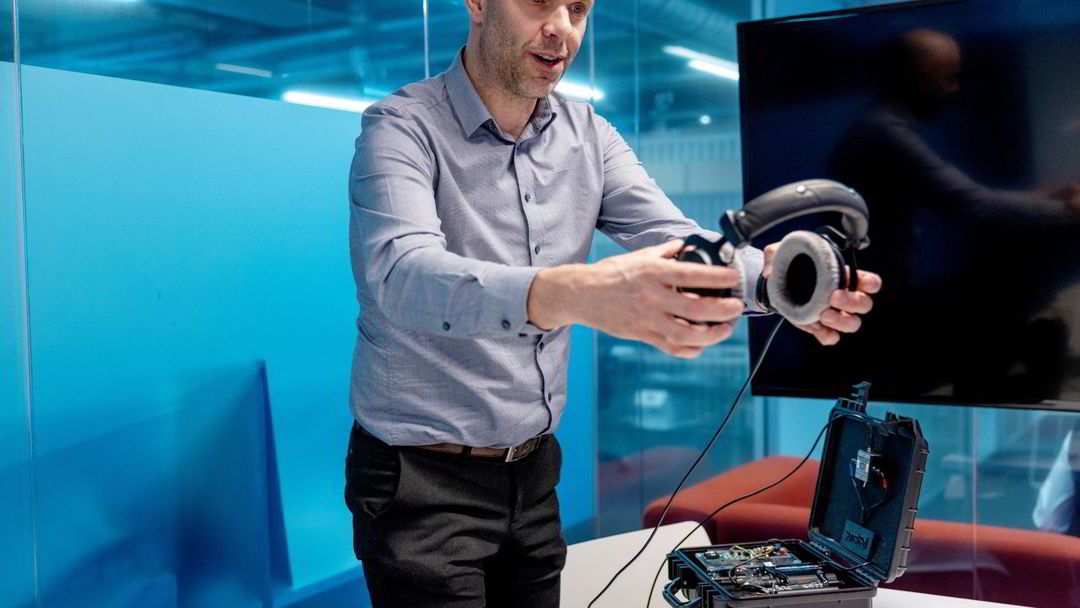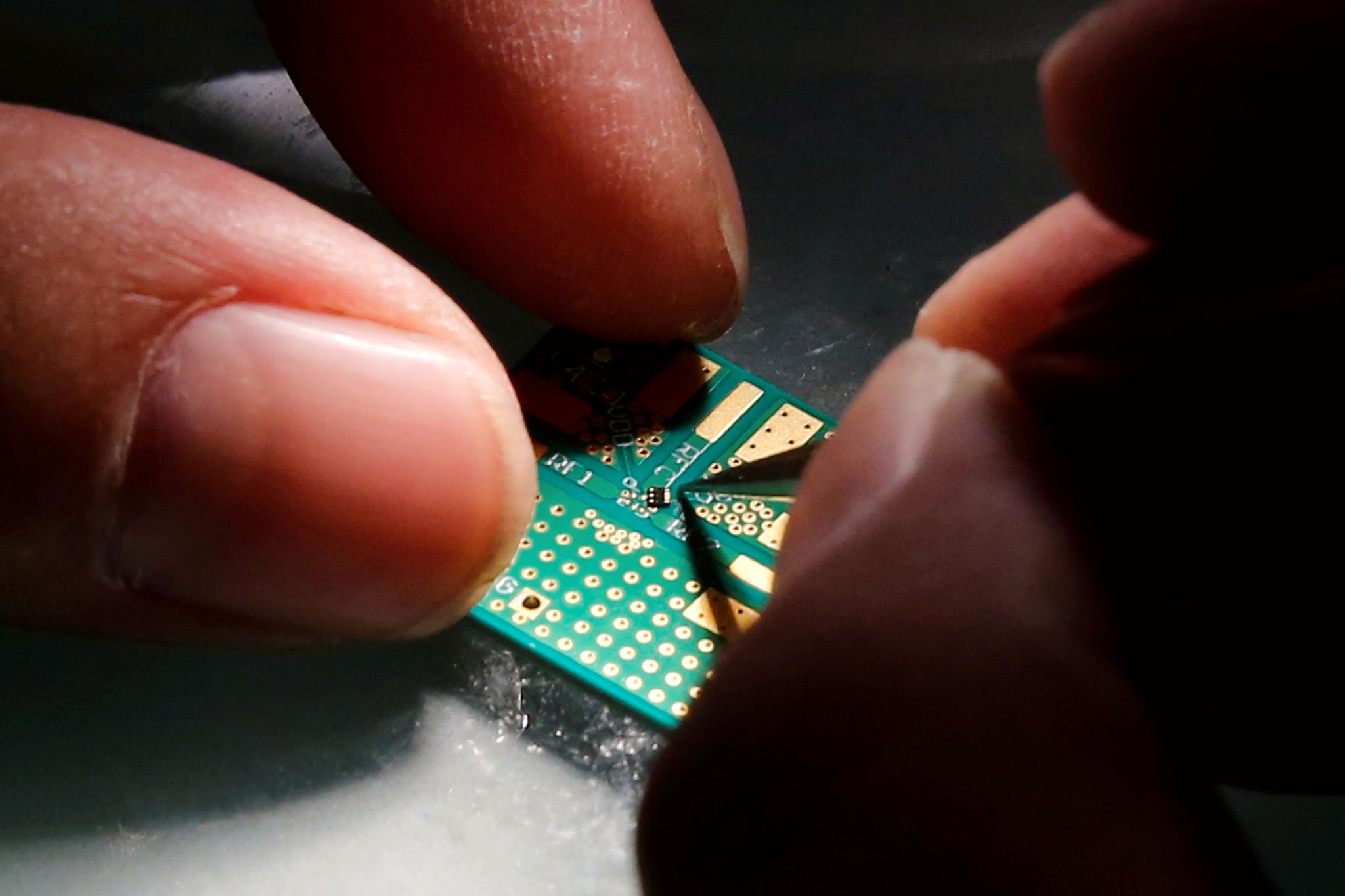In the black test case on the table is the microphone chip, which is valued at 300 million according to DN’s experiences in a recent capital raise
Nobody can develop this technology around the kitchen table, says Sverre Dale Moen (53).
Moen extends his finger and shows the little chip they hope to reach for some of the world’s largest electronics manufacturers. The microphone is specially designed to pick up the slightest sound in noisy environments.
– In this small unit there is technology built on a completely new principle. They are 3×4 mm and electromechanical filled.
After several years of development work, the microphone chip has been reduced from the size of a sugar cube to a few millimeters.
Sensibel is one of more than 150 companies registered in This year’s DN Innovators Entrepreneur Survey.
Light is used to capture sound
The secret behind the chip’s patents lies in the way light beams are used to read sound. Sensibel is a branch of Sintef where they have been researching optics for several decades.
Now the company is entering the market for so-called mems microphones that are found in everything from cell phones, cars, and smart speakers to noise-canceling headphones.
Regular memes microphones use the same principle as when the microphone was first invented. The sound waves hit a thin metallic membrane that reads similarly.
– We’ve reversed the concept and developed a visual reading where light is sent back and detected. Our membrane is custom made. This is no ordinary fabric.
Moen compares the use of optics to the evolution when old sound bars were replaced with CDs that used laser technology.
The reception when they brought the black suitcase wasn’t always warm.
– When we began to travel, the reactions were that they did not believe in this. We were told to come back when we had something. We’ve now demonstrated that it’s possible to put studio mics into mics, says Moen.
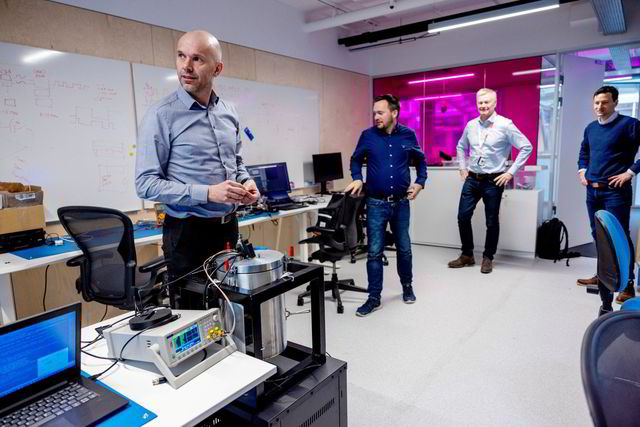
In the lab’s acoustic clock, the microphone is tested with everything from the noise of fighter planes to detecting signals that the human ear can barely hear. Here is the original core team Sverre Dale Moen (from left), Jakob Vennerød, Stig Torud, and Matthieu Lacolle. (Photo: Michaela Berg)
Third construction project
For an NTNU electrical engineer from Rendalen, this isn’t the first time he’s built a technology company from scratch. Twice before, companies were acquired by global giants:
- Moen co-founded Chipcon in 1996, which was sold nine years later to Texas Instruments for NOK 1.3 billion. The three founders received NOK 100 million each. Gear Four was one of the founders.
- Then he joined the startup New Index in Trondheim. This time, NTNU’s whiteboard technology was developed using an inkless pen and digital camera to bring it out of the lab. The company was sold to Epson six years later for 144 million. Moen stayed with about 13 million.
And now he’s back in business with technology developed at Sintef. This time around, a core team of four has been formed which will now take the optics technology to market.
– That I’ll start again I did not think. It was very exciting, says the entrepreneur trio.
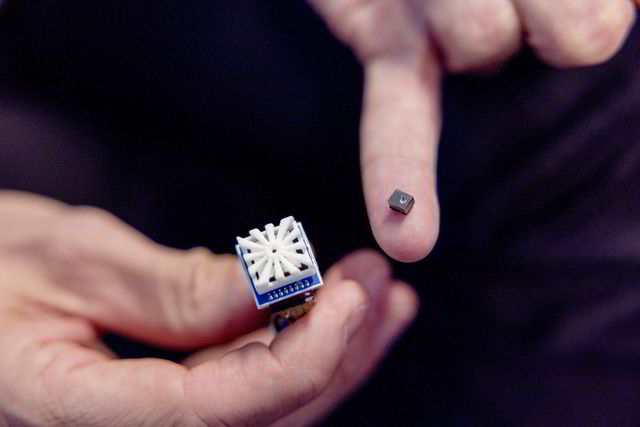
After several years of development work, the wafer has been shrunk from a lump of sugar to a few millimeters. (Photo: Michaela Berg)
Aiming at big technology
In the test lab at Forskningsparken, the chip is tested in the harshest noise environments to capture the strongest and weakest sounds.
In recent years, the number of small microphones has increased dramatically. Sensibel has set an offensive target of capturing a five percent market share of the seven million microphones sold annually.
In the first stage, the strategy is to move towards niche products, and in the next stage, the plan is to turn the microphone into a best-selling product in small electronics where there is much greater price pressure. An ordinary mobile phone often has four microphones.
– We have fully developed prototypes, and now we are going out around the world to test the microphone with customers to scale it up.
– Is it possible to get into the bestsellers from Apple and Samsung?
We’ve seen before that it was possible as long as it was a good product. We are already talking with the big companies, but we did not start with the 500 million market for mobile phones
Pioneering company hacked on air
This sensor led to an international breakthrough for Erlend Bolle and Airthings. Here he tells us the way forward.
02:23
Posted:
In speech recognition, a huge market has been opened.
– Siri does not understand what is being said because it is too noisy. The limitation lies in the microphone. The picture quality in the phones is phenomenal, but the microphones are not up to the same level.
When background noise is removed, new possibilities of sound analysis are opened, targeting, for example, alarm systems. Capturing the sound of broken glass or sliding in a warehouse can be a huge step forward.
gets in foreign owners
Sensibel is now raising NOK 150 million, with German fund project Trumpf leading the way as a primary investor.
There will also be a fund from the European Union, EIC, supporting European technology development and Skagerak Capital. Entrepreneurs and employees now own 27 percent of the company.
Sintef Venture and Investinor are already the largest owners. In addition, the European Union and the Research Council contributed nearly 40 million in support.
Based on the Sintef environment, several heavy technology companies were produced, including the locomotive listed by Nordic Semiconductor and headquartered in Trondheim and Chipcon.
Sensibel’s program wouldn’t have started without Sintef’s basic research and funding from Investinor, because it requires a lot of capital, says Moen.
The most sensitive in the world
Sintef obtained the patents on the optics, while Sensibel received an exclusive license. The original plan was to use the technology for something other than consumer electronics.
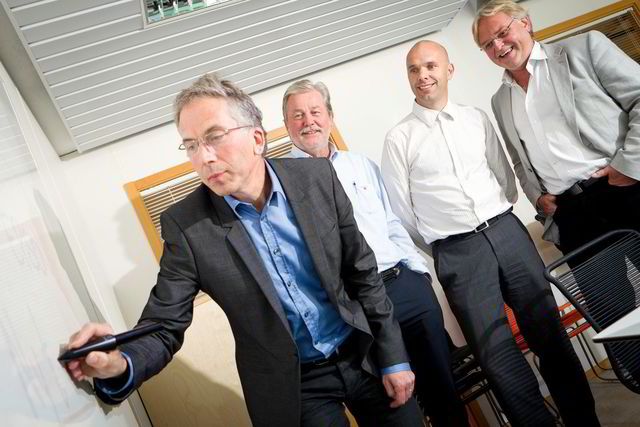
The digital pen developed by Sverre Dale Moen was sold to Epson in 2011. Here from left: New Index founder Tormod Njølstad, Bjørn Anders Fossum, Sverre Dale Moen and Herbjørn Skjervold. (Photo: Ole Morten Melgård)
– The optical technology of the most sensitive microphones in the world was initially intended for earthquakes, but then the oil crisis came and then interest declined, said investment manager John Turvik.
He is very pleased with the way Sintef’s research assignments are being transferred to new start-ups. Sensibel is one of a few dozen companies that have emerged in recent years from Sintef’s research activities.
Sintef Venture’s active portfolio now includes 18 companies with a total business year of 300. From 2020 to 2021, the estimated valuation increased from NOK 1.1 billion to NOK 2.3 billion.
Sintef is a research organization and non-profit organization that will conduct basic research on behalf of AS Norway. At the same time, we also have a social mission to create a new industry in the startup world, Torvik says.(Conditions)Copyright Dagens Næringsliv AS and/or our suppliers. We would like you to share our cases using a link that leads directly to our pages. All or part of the Content may not be copied or otherwise used with written permission or as permitted by law. For additional terms look here.

“Web specialist. Lifelong zombie maven. Coffee ninja. Hipster-friendly analyst.”

